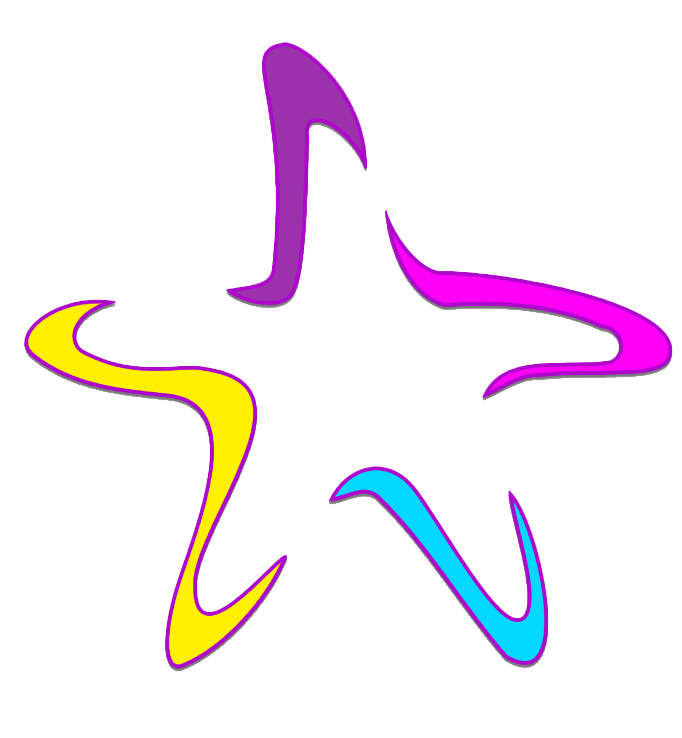
Gender Diversity and Multiculturalism
id: a group of people’s hands in a circle, on the beach. Hands are a variety of genders, ages, and skin tones.
Click here to download Gender Diversity and Multiculturalism as:
An audio file - A4 print size (2 pages) - a large A4 print/mobile version - a plaintext doc
Article By Rey Vargas (they/them)
My Experiences
Since English is practically a second first language for me, I had little trouble communicating with others when I first came to Australia. However, slang and regional expressions would sometimes confuse me, and I’d need help from a friend. In fact, I didn’t realise the phrase was “see you this arvo” and not “see you at the Salvo” until a few years ago!
My native language, Filipino, does not distinguish gender when it comes to third-person pronouns. That means ‘he’ and ‘she’ share a single word, siya. So, coming here, I would get pronouns mixed up. I saw it as a small, honest mistake, but the people around me would make such a big deal, and that made me feel conscious. I never had to be so careful around such small words before.
Growing up, I never experienced the feeling of being misgendered because there was nothing to misgender me. So much of the Filipino language is gender neutral (many familial terms are gender neutral e.g. ‘niece’ and ‘nephew’ share a single word, ‘brother’ and ‘sister’ share a single word, ‘son’ and ‘daughter’ share a single word) that I was shielded from the gender binary for most of my developmental life.
Gender Diversity in the Philippines
I had a feeling I was trans since I was young, but I didn’t have the words for my feelings nor the time to do that kind of introspection. When you live in a developing country that deals with constant natural disasters, your priorities lie elsewhere.
But I was also aware that gender diversity existed. In the Philippines, there is an unofficial third gender, the bakla. They are folks assigned male at birth, but they adopt feminine mannerisms and dress in a way that is perceived to be feminine. However, they do not always self-identify as women. They also have their own secret language, called swardspeak, that they use with each other or to identify themselves as being bakla. It is a constantly changing language and a person’s fluency in swardspeak is an indication of their connection to the bakla community.
Bakla’s are considered part of the LGBTQ+ community in the Philippines.
Bakla’s are a totally integrated demographic in the Philippines, even though they are not legally recognised. They get heaps of representation in media like television and film, with the comedian Vice Ganda being the main example of a bakla that is widely recognised in the country. Records of the bakla go as far back as pre-colonial Philippines, where they are treated with high regard and often take on the role of shamans. Spanish colonisation stigmatised the existence of the bakla, and the community had to work on reclaiming pride in their identities.
Challenging Gender Norms
The trans community has always existed in some shape or form for a long time and in different parts of the world. Native Americans have two-spirit people, Maori culture has the wakawahine and the wakatane, and Aboriginal cultures have brotherboys and sistergirls. Taking the time to learn about the different cultures and perspectives on gender can be a rewarding experience.
The Eurocentric and Western ideas about gender that most people grow up with are often limiting and/or only recently invented.
Up until the 1900’s, all babies and toddlers, regardless of gender, wore white dresses because they were easy to clean and more practical. High heels go as far back as the 15th century and were originally invented so that soldiers could secure their feet in stirrups. Crop tops were once popularised in the male bodybuilding community in the 80s as a workaround from the ban of being bare-chested in public gyms.
When you realise that gender norms are arbitrary and ever changing, it will be much easier to empathise with the trans community. It will also lead to better introspection about your own gender. I’m not necessarily implying that you might be trans, but taking the time to think about whether your gender identity is genuine or a result of conditioning from a young age is a beneficial way of developing a better relationship with yourself and to enhance your insight into the world.
Click here to download Gender Diversity and Multiculturalism as:
An audio file - A4 print size (2 pages) - a large A4 print/mobile version - a plaintext doc
